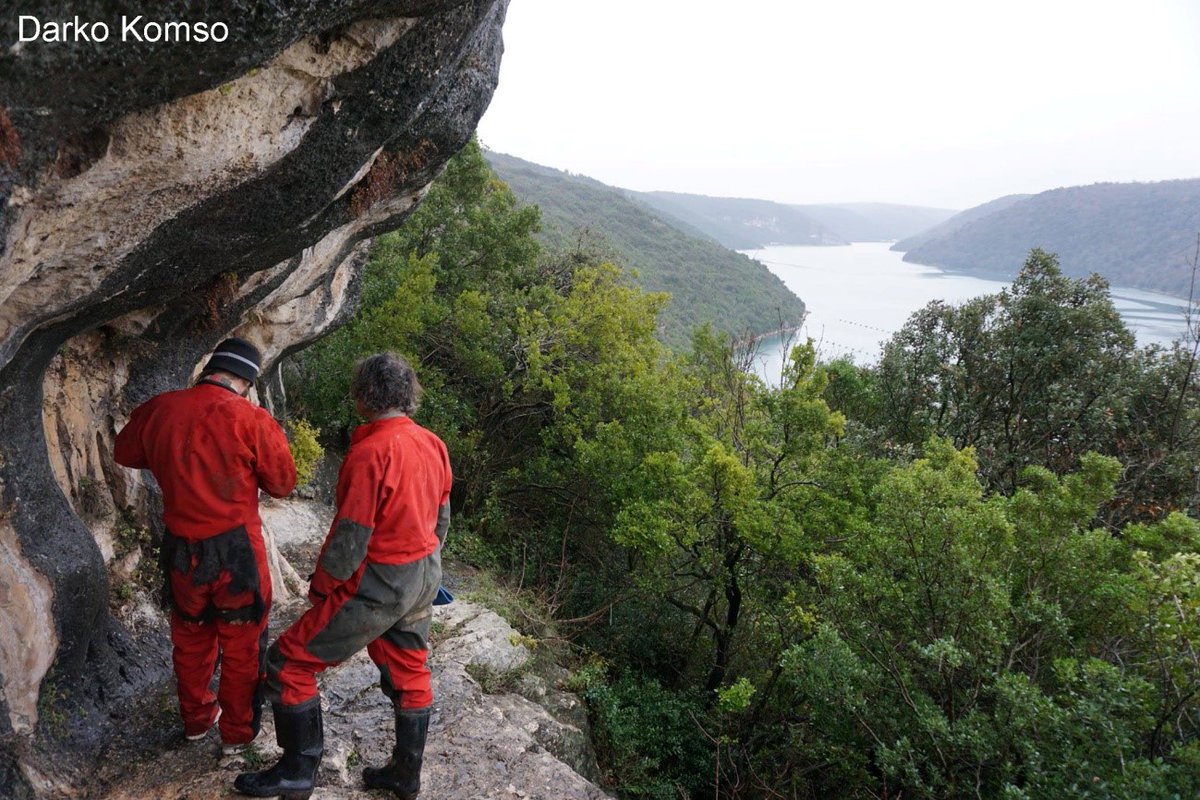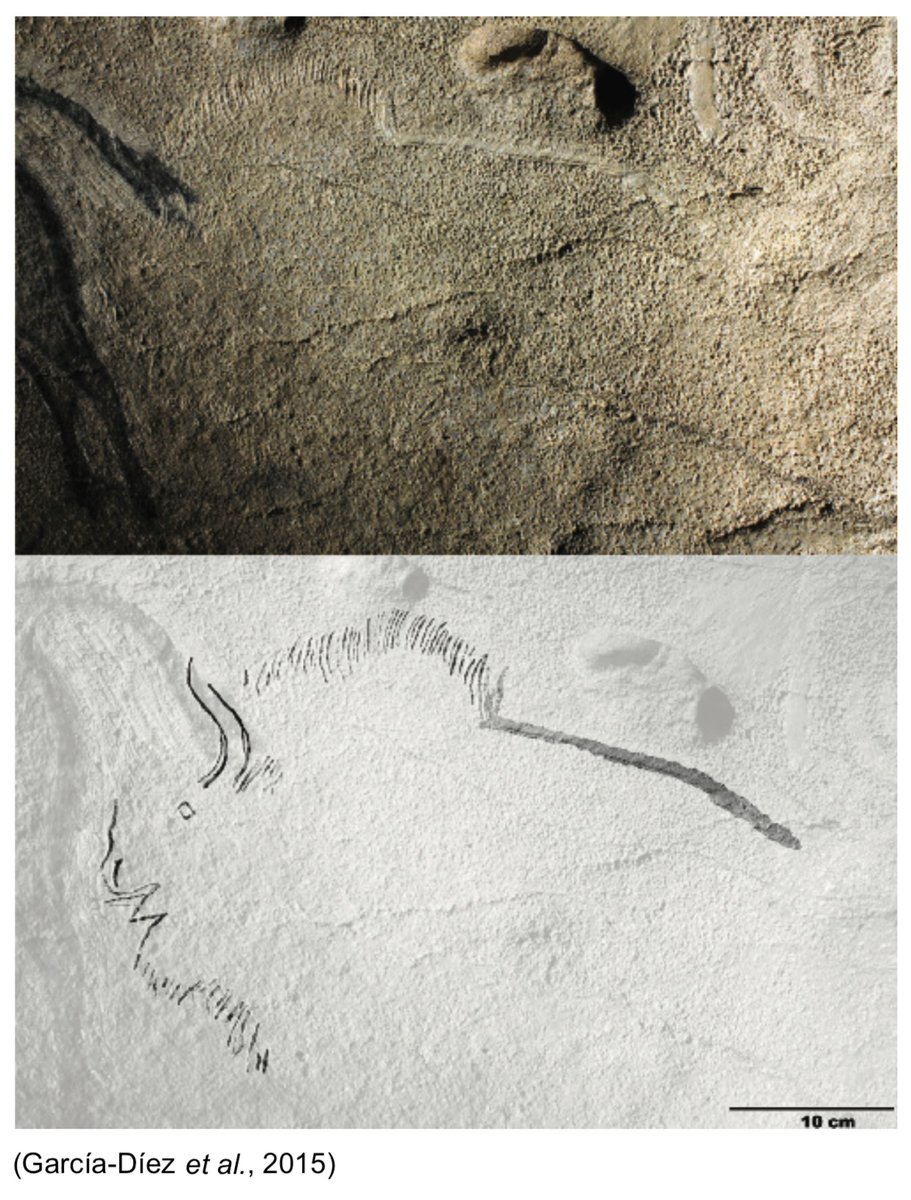
☕️Good morning friends! 🗺️Today we travel very far to bring you the fantastic landscape of Lim Channel in Istria… well the underground one! Let’s start with Romualdova cave!
Cave: #Romualdova
Place: Lim Channel, Istria (Croatia)
Motif: Bison
Chronology: Upper Paleolithic
Cave: #Romualdova
Place: Lim Channel, Istria (Croatia)
Motif: Bison
Chronology: Upper Paleolithic

⁉️Pal. rock art is especially preserved in the karstic regions of Western Europe. To the East, rock art becomes more unusual. In fact, until 2010 there was not any remaining of this kind in the Balkans. Fortunately, things are changing thanks to the hard work of archaeologists. 

➡️In 2017, a survey project was carried out under the direction of our friend Aitor Ruiz-Redondo @unizar @PALAEOARTEAST project. 44 red graphic units were identified, divided in four panels: a bison, an ibex (📸), a vulva, 2 anthropomorphic and several dots, lines and marks. 

❗️Rock art study was completed with an archaeological excavation, our member @GarateDiego was involved in the whole research process. Upper Palaeolithic materials were recovered, the most significant being a fragment of a red ochre crayon, ...
The stylistic evidence indicates a Palaeolithic date for the Romualdova paintings. The poor preservation and lack of chronologically diagnostic indicators for many of the motifs impedes further refinement. 

⚠️Nevertheless, several elements potentially link these cave paintings (🎥) to the Early Upper Palaeolithic.
➡️
➡️
➡️
➡️
And obviously, Lim Channel is a fantastic place to visit. This called fjord, close to the spectacular Rovinj village, has a 10 kilometer estuary. So many things to see in Croatia @Croatia_hr.
Just take a look and dream croatia.hr/en-GB/Destinat…
D. Garate (@GarateDiego)
Bye!👋😉
Just take a look and dream croatia.hr/en-GB/Destinat…
D. Garate (@GarateDiego)
Bye!👋😉
• • •
Missing some Tweet in this thread? You can try to
force a refresh




























